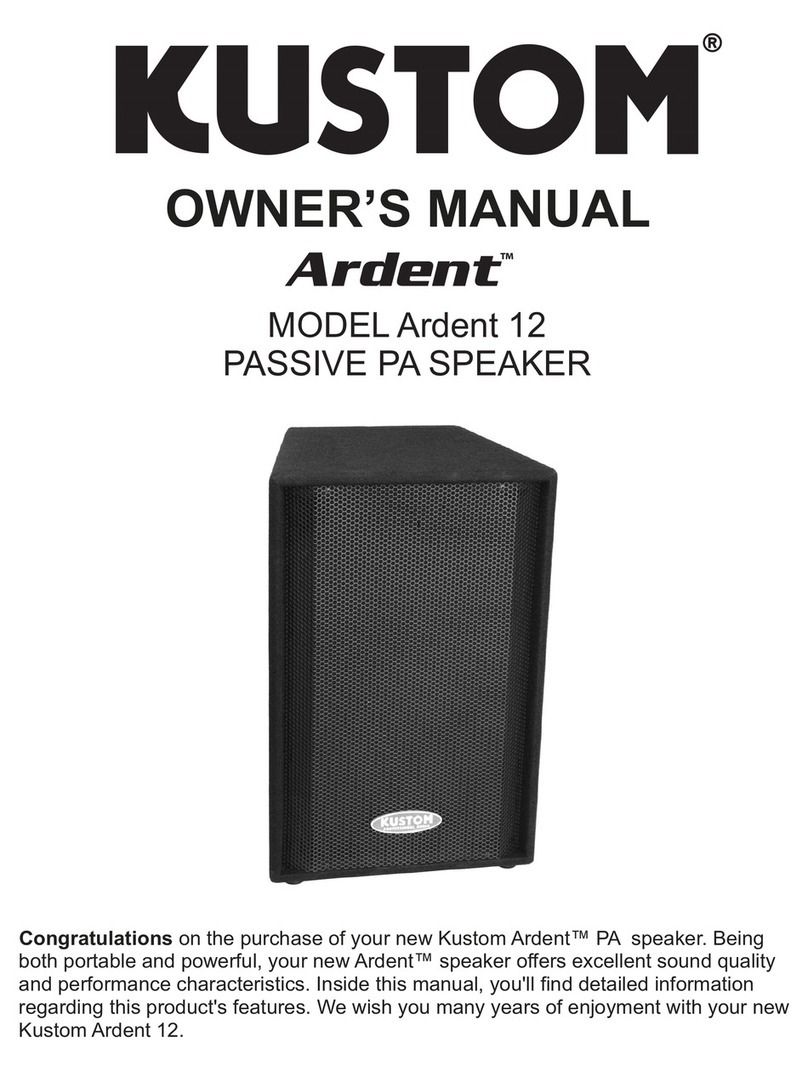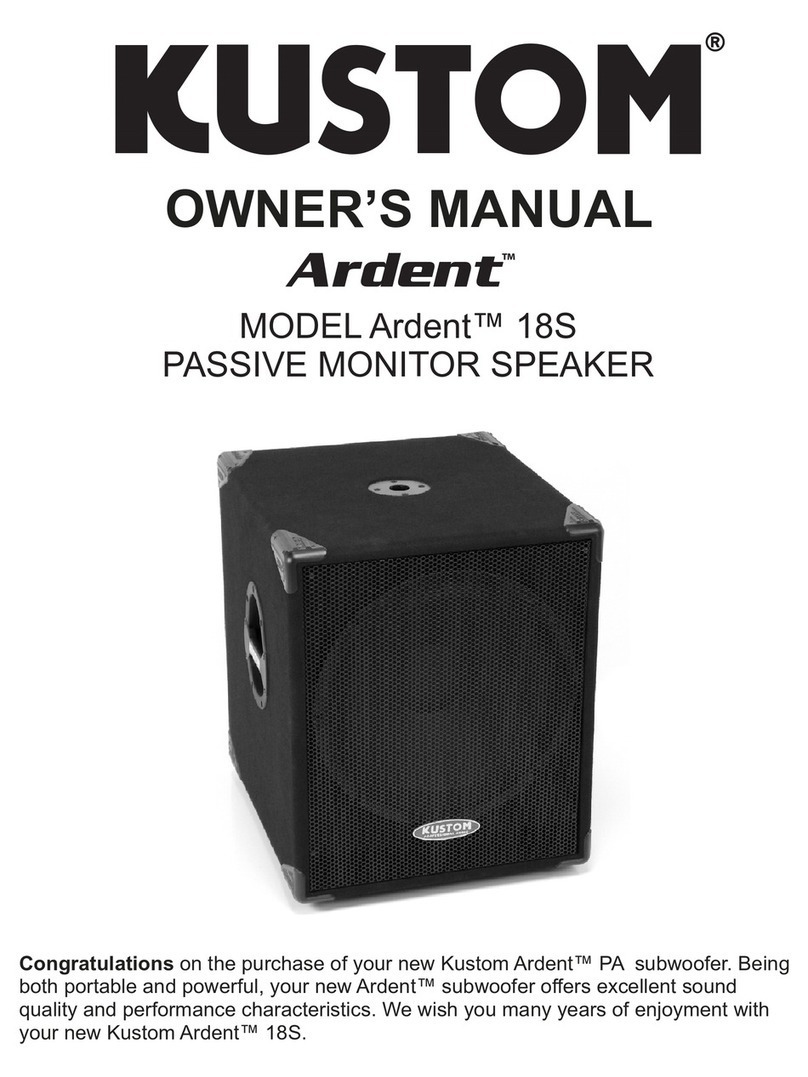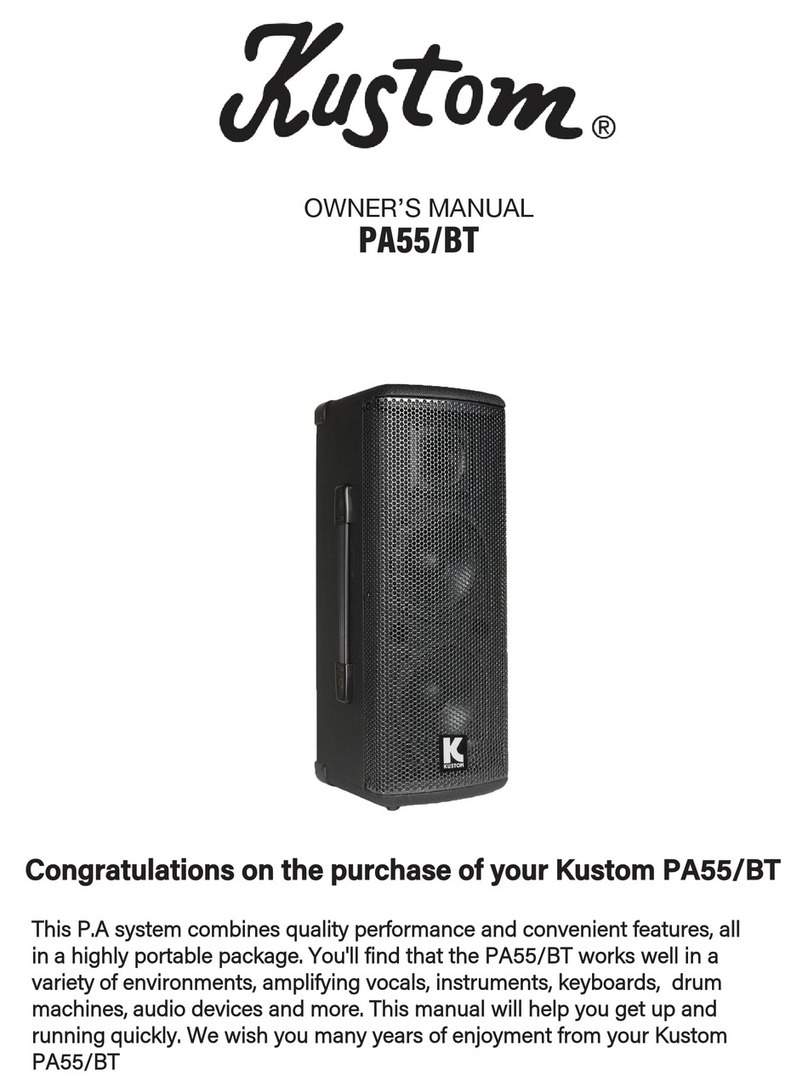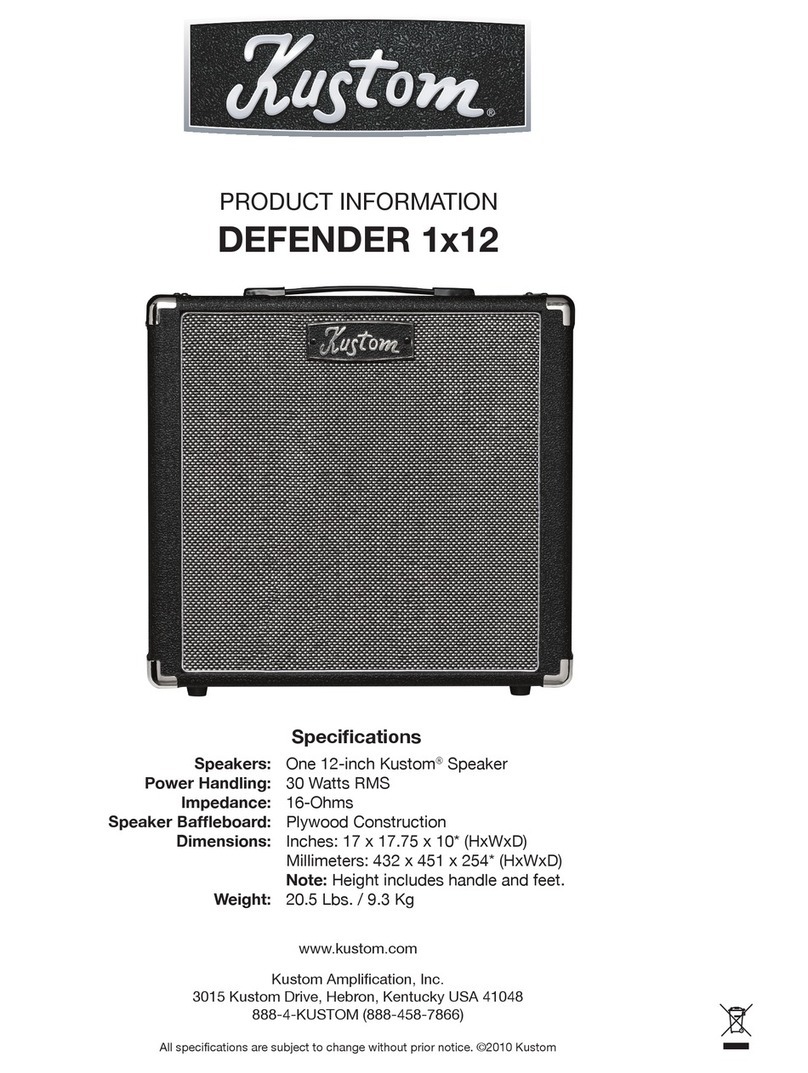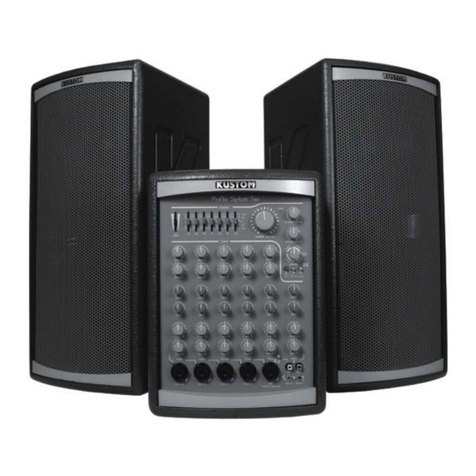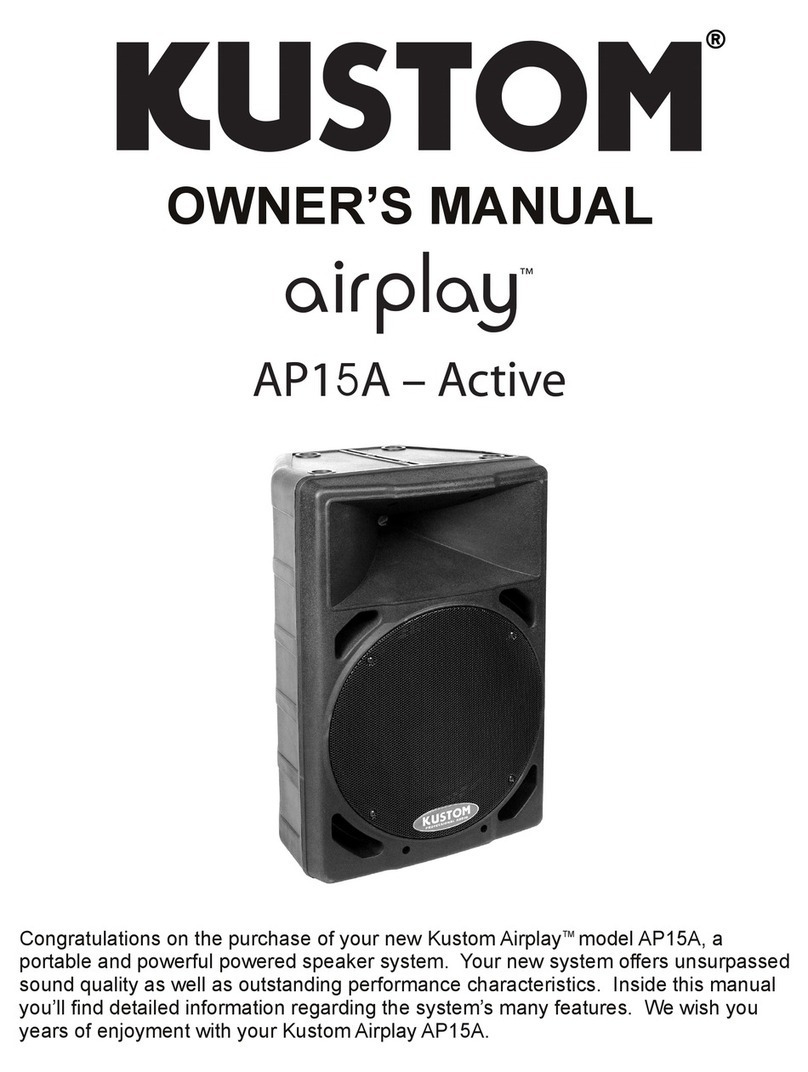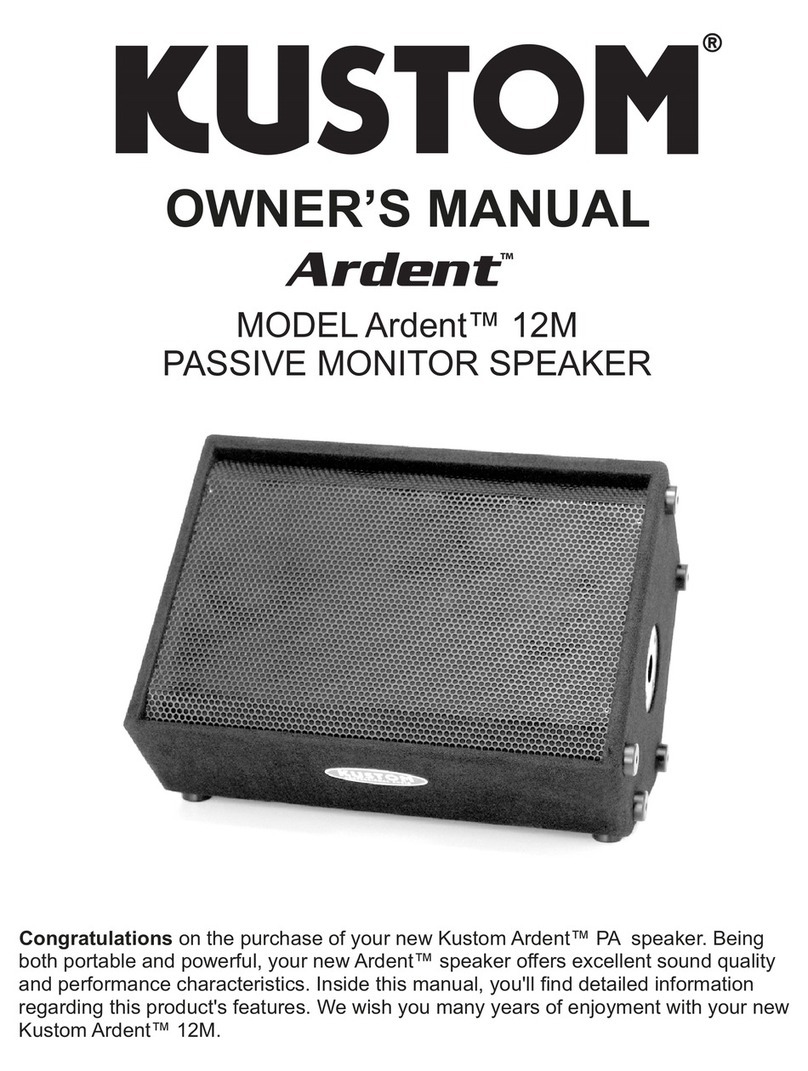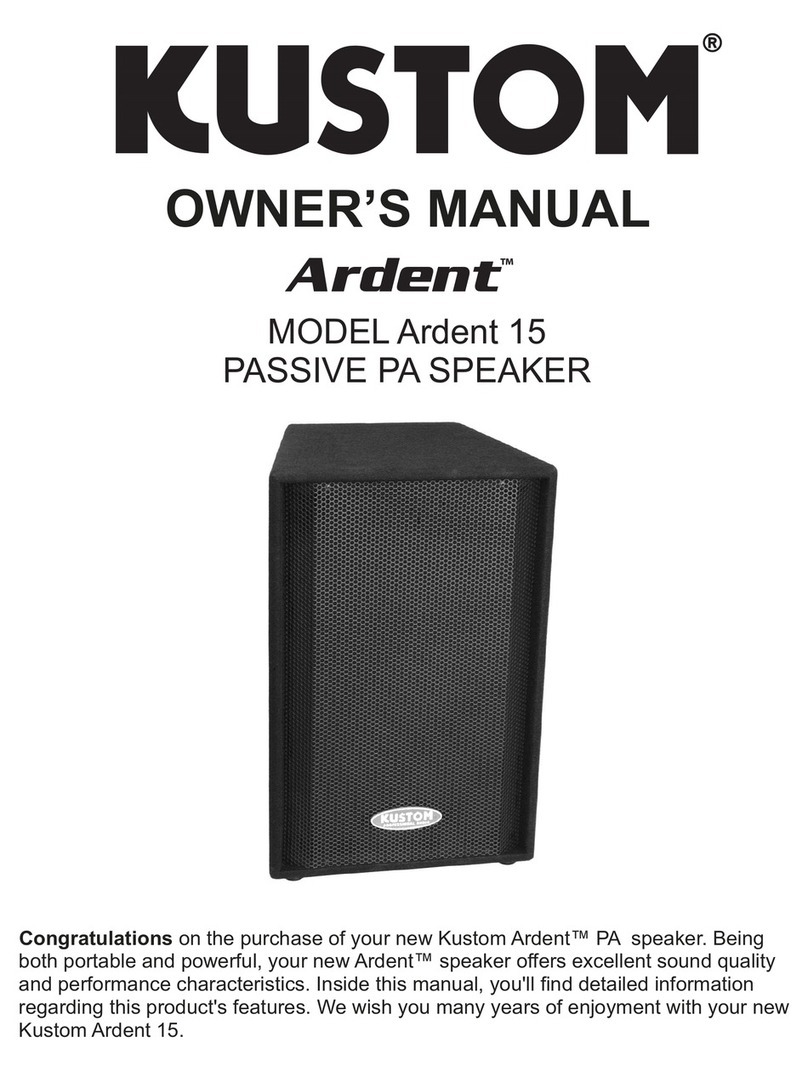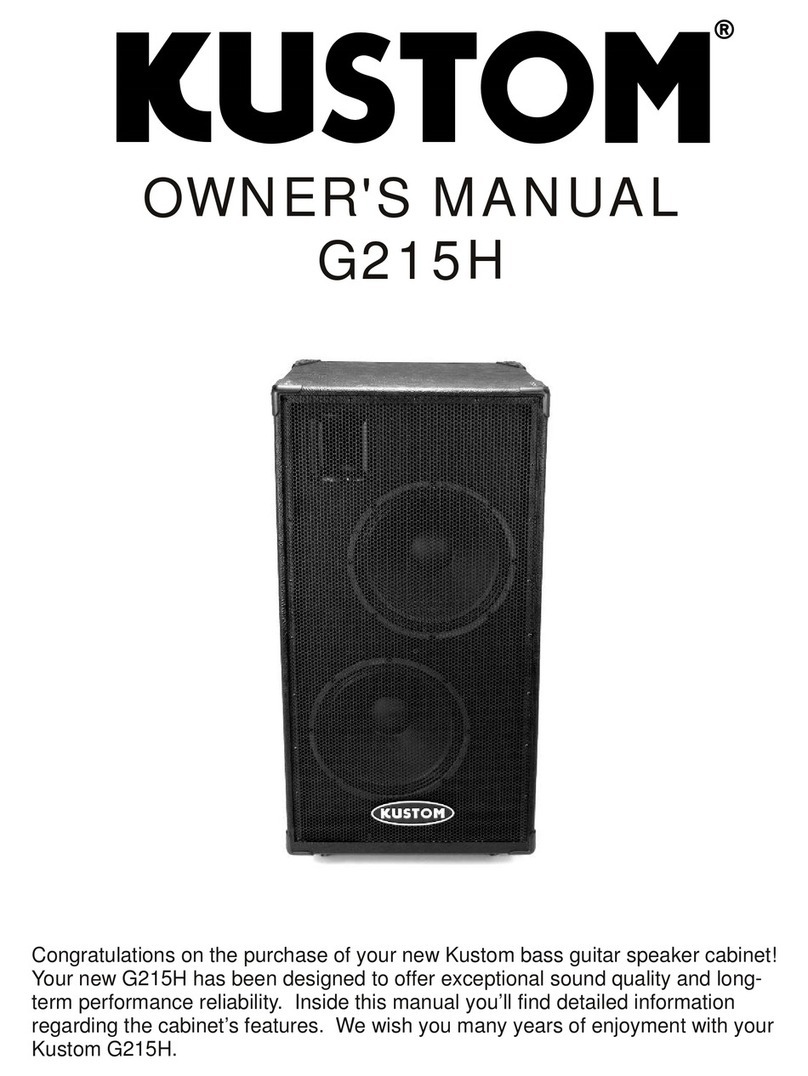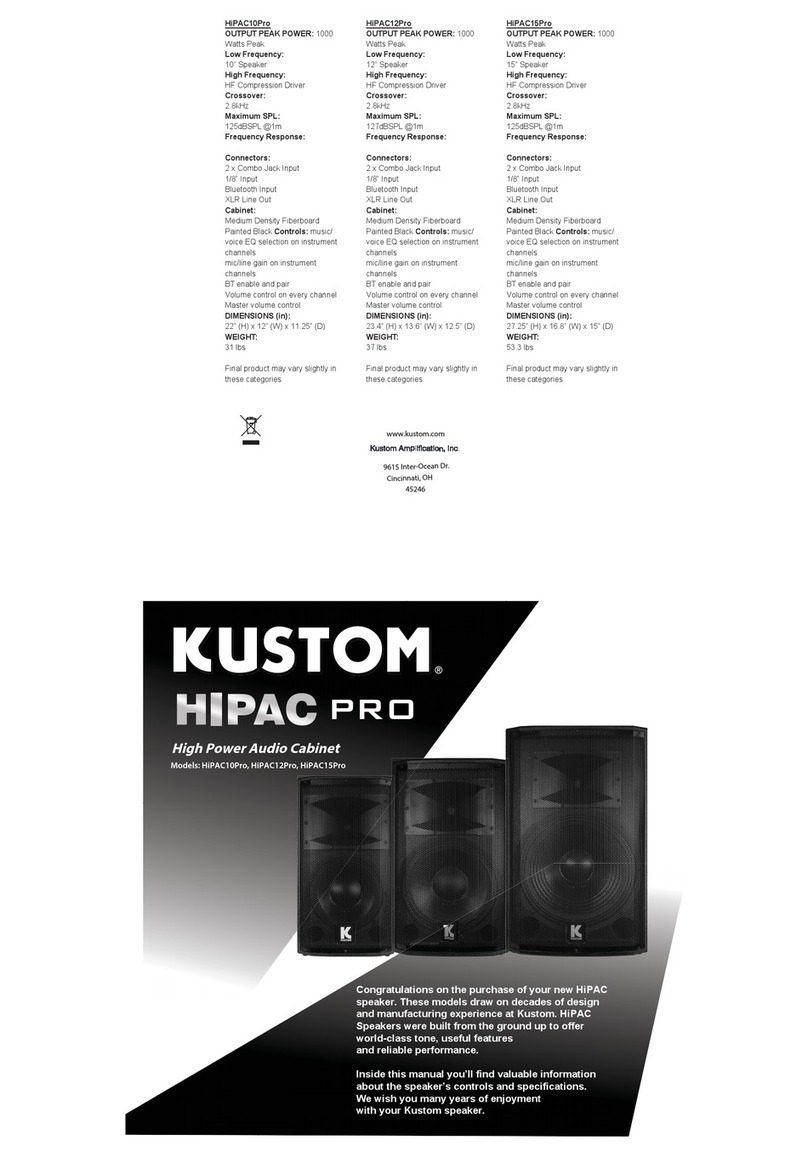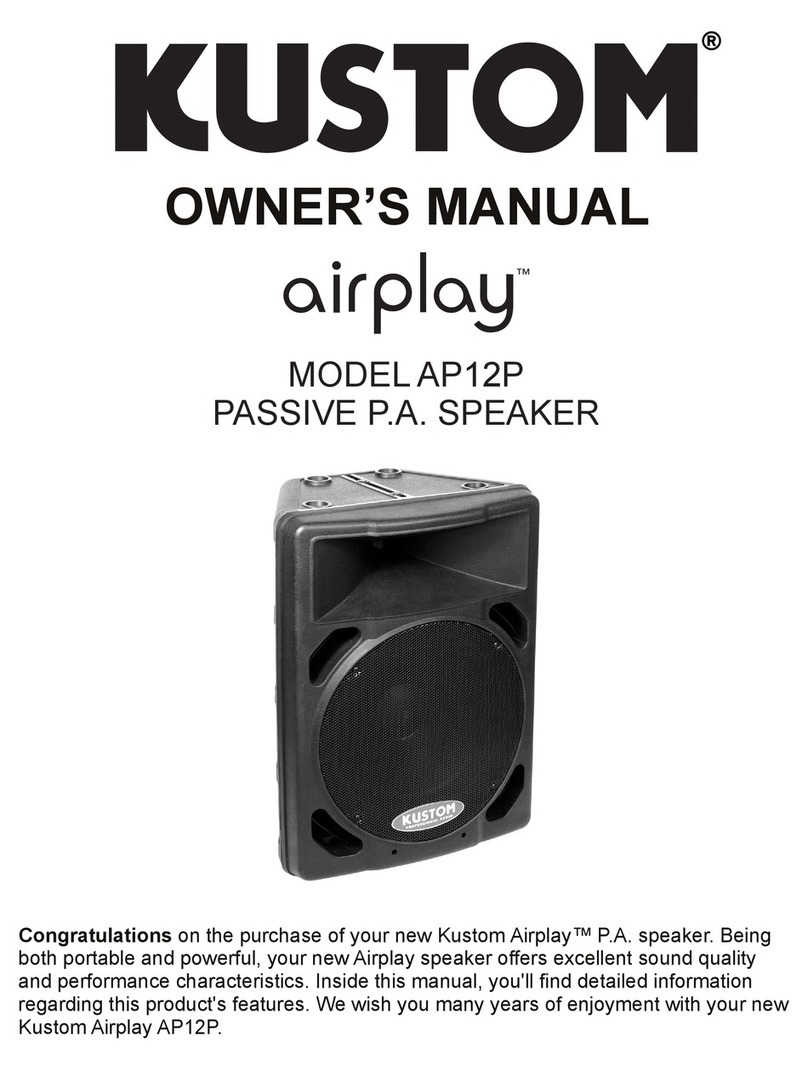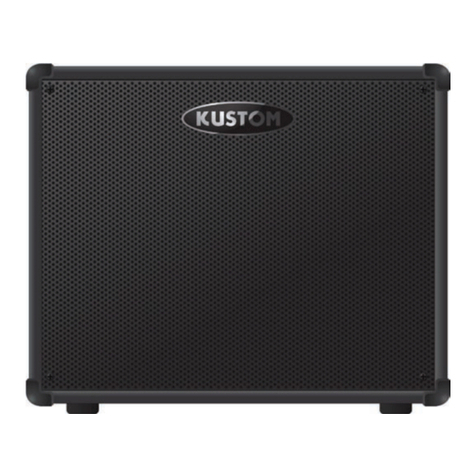
kustom.com
2. Mic/Line Inputs: These ¼-inch inputs may be used to connect high-impedance microphones or keyboards, drum
machines and other audio devices.
3. Volume: Use these controls to adjust the volume level of each channel and the relative balance between them.
4. Tone: This shapes the tonality of each individual channel. When turned clockwise, treble frequencies are accented to
produce a clearer, brighter sound. When turned counterclockwise, warmer bass frequencies are emphasized.
5. Effects: Adjusts the apparent volume level of the effects. Turn clockwise to increase the prominence of the reverb/
delay effect in the mix. Turn counterclockwise to decrease the level of effects in the mix.
6. Record Out: Use these stereo RCA jacks to connect an external recording device. Output level is determined by the
channel Volume controls. Note: The Master Volume control does not affect this output.
7. Playback In: Use these stereo RCA jacks to connect an external audio device such as an MP3, CD player or
computer for playback. Use Playback level to adjust volume. Note: Bass, Mid and Treble affect the tone of this input.
The Master Volume control does not affect this input.
8. Insert Jack: The primary purpose of this unbalanced Stereo (Tip/Ring/Sleeve) jack is for placing an external effect or
EQ between the mixer’s preamp output and power amp input. The Ring is a line level preamp output. All controls on front
panel affect this output. It is un-switched, leaving the signal path to the power amp un-interrupted. The Tip is a line level
power amp input. It is switched, breaking the signal path between preamp and power amp.
This jack can also be used as a preamp line level output to power other external devices such as a power amp by
plugging a mono ¼-inch cable half way (the rst click) in. The preamp is not disconnected from the power amp using
this method.
MASTER SECTION
The Master Section provides nal control over the devices that you have connected to the Input Section. Your Master
settings will affect all individual channels.
9. Master Volume: Controls the overall volume of all inputs except the Playback inputs, which are controlled by the
Playback Level control.
10. Bass: Determines the emphasis of bass frequencies. Turning this knob clockwise creates a deeper, warmer tone. If
you need a brighter sound, reduce the bass by turning counterclockwise.
11. Mid: Determines the emphasis of midrange frequencies: the frequencies humans hear the best. This is the sweet
spot in the mix. Use this control to warm up vocals and guitars.
12. Treble: Turned clockwise, this control accents treble frequencies to produce clearer, crisper sound. Turn
counterclockwise to make the sound softer and less bright.
13. Playback Level: This adjusts the volume level of the audio device that is connected to the stereo Playback In jacks.
For best results, you’ll want to balance the volume level on the audio device with the Playback Level control on the
Prole system. Note: The Playback control will allow audio to be heard even when the Master Volume is turned down.
14. Effects Master: This controls the overall level of the built-in reverb/delay effects. This provides a studio-like quality to
live performances.
15. Power: This indicator lights up when the Power switch is turned On. When it is not lit, the system is off.
Prole 200 Control Panel
